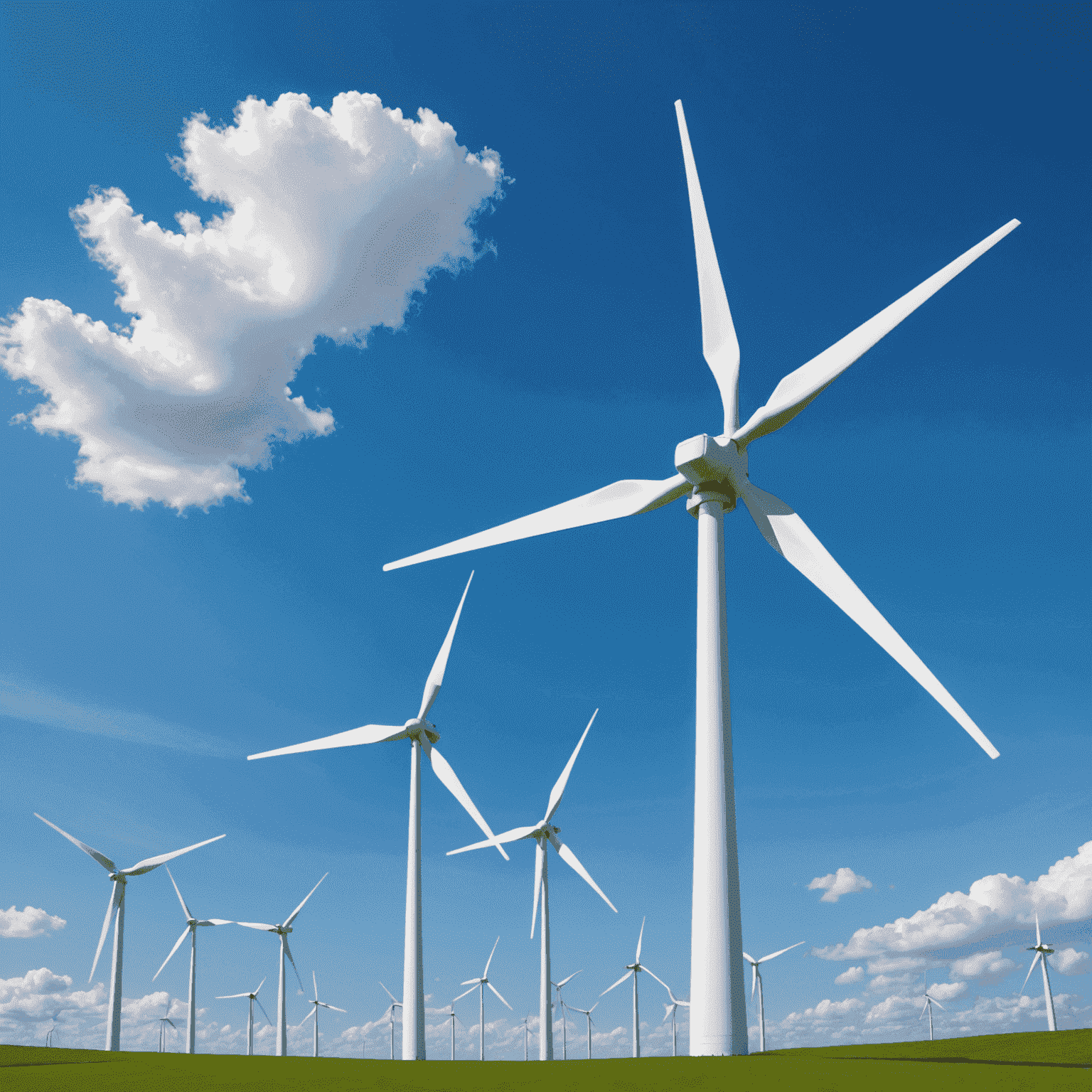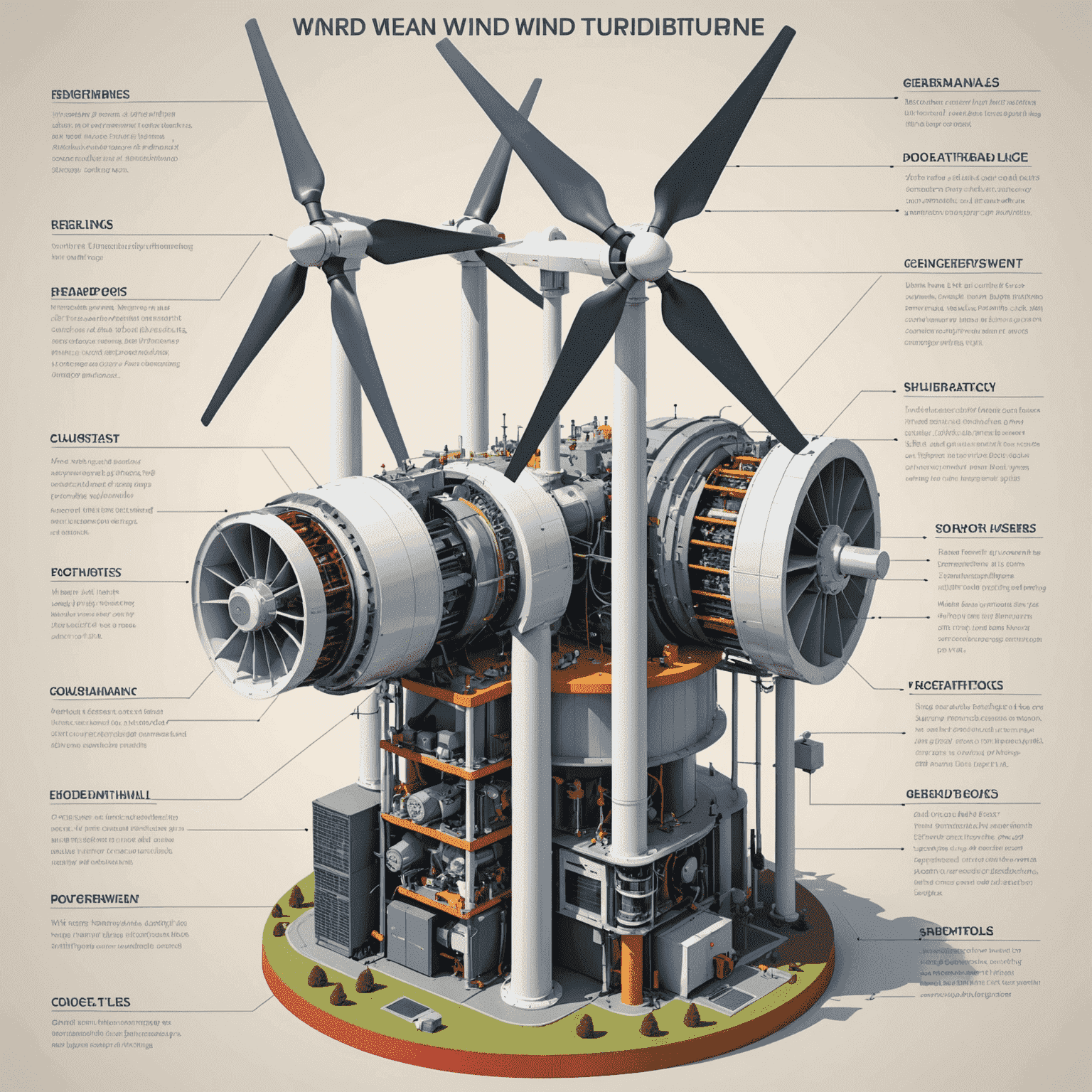Wind Turbine Basics: How They Work

Wind turbines are marvels of engineering that harness the power of nature to generate clean, renewable electricity. Understanding how these energy-efficient giants work is crucial for anyone interested in sustainable power solutions and cost savings in the long run.
The Basic Components
A typical wind turbine consists of several key components:
- Blades: Usually three, designed to catch the wind
- Rotor: The hub and blades together form the rotor
- Nacelle: Houses the generator and other mechanical parts
- Tower: Supports the entire structure
- Foundation: Anchors the turbine to the ground
How Wind Turbines Generate Electricity
The process of generating electricity from wind is surprisingly straightforward:
- Wind blows over the blades, causing them to spin.
- The spinning blades turn a shaft inside the nacelle.
- The shaft connects to a generator.
- The generator uses an electromagnetic process to convert the rotational energy into electricity.
- The electricity is then sent through transmission lines to the power grid.

Efficiency and Cost Savings
Wind turbines are becoming increasingly efficient, offering significant cost savings over time:
- Modern turbines can convert up to 50% of the wind's energy into electricity.
- The cost of wind power has decreased by 70% in the last decade.
- Wind farms can provide energy at rates competitive with or lower than conventional power sources.
- Once installed, operational costs are minimal as the "fuel" (wind) is costless.
Environmental Benefits
Wind turbines offer numerous environmental advantages:
- Zero direct emissions during operation
- Minimal water usage compared to traditional power plants
- Can be installed on existing farms or ranches, benefiting rural economies
- Reduces dependence on fossil fuels
Conclusion
Wind turbines represent a powerful solution in our transition to clean, renewable energy. By harnessing the natural power of wind, these machines offer an efficient, cost-effective, and environmentally friendly alternative to traditional power sources. As technology continues to advance, wind turbines will play an increasingly important role in meeting our energy needs while protecting our planet.